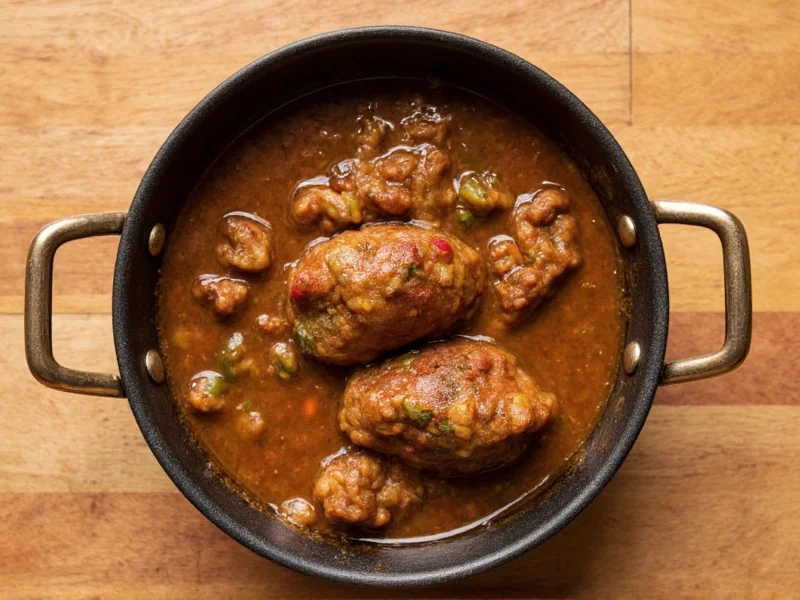When exploring what is gumbo filet, it's essential to understand this unique ingredient's role in Southern Louisiana cuisine. Filet powder, pronounced "fee-lay," has been used for centuries by the Choctaw people and later incorporated into Creole cooking traditions. The powder comes from the leaves of the sassafras tree, which are harvested, dried completely, and then finely ground.
Historical Origins of Filet Powder
The use of sassafras leaves as a thickener predates European settlement in Louisiana. Native American tribes, particularly the Choctaw, introduced early settlers to filet powder, calling it "kombo filé" (meaning “gumbo filet”). This indigenous contribution became fundamental to what we now recognize as authentic gumbo.
During the 18th and 19th centuries, filet powder established itself alongside two other primary gumbo thickeners: roux (a cooked flour and fat mixture) and okra. Each thickener represents different cultural influences in Louisiana cooking—roux reflecting French techniques, okra showing African heritage, and filet honoring Native American contributions.
What Exactly Is Filet Made From?
Authentic gumbo filet consists solely of dried sassafras leaves from the Sassafras albidum tree. The leaves undergo a careful process:
| Filet Production Process | Details |
|---|---|
| Harvesting | Young sassafras leaves collected in spring |
| Drying | Leaves air-dried until completely brittle |
| Grinding | Dried leaves pulverized into fine powder |
| Storage | Kept in airtight container away from light |
Important note: Modern filet powder contains no safrole, the compound once present in sassafras that raised health concerns. Commercial producers now use safrole-free sassafras or alternative formulations that maintain traditional flavor without safety issues.
How Filet Functions in Gumbo
Understanding how to use filet in gumbo properly is crucial for authentic results. Filet serves two primary functions:
- Thickening - When added to hot liquid, filet's mucilage creates a smooth, viscous texture
- Flavor enhancement - Imparts distinctive earthy, slightly floral notes with hints of root beer
Unlike roux (which requires lengthy cooking) or okra (which must simmer), filet works as a finishing thickener. Chefs add it after removing the gumbo from heat, stirring until dissolved. Boiling filet causes it to become stringy and lose its thickening properties—a common mistake when learning proper filet gumbo technique.
Filet vs. Other Gumbo Thickeners
Many home cooks wonder about the difference between filet and roux in gumbo preparation. Each thickener creates distinct characteristics:
- Roux - Cooked flour and fat (usually oil or butter), ranging from light to dark. Provides nutty flavor and substantial body. Requires significant cooking time.
- Okra - Fresh or frozen okra pods added during cooking. Creates a slippery texture and grassy flavor. Traditional in seafood gumbos.
- Filet - Sassafras powder added at the end. Creates smooth texture with herbal notes. Most common in chicken and sausage gumbos.
Authentic Louisiana gumbos typically use just one thickener, though some modern variations combine methods. Traditionalists argue that mixing thickeners dilutes the distinctive character each provides.
Practical Usage Guidelines
Mastering when to add filet to gumbo separates novice cooks from experienced ones. Follow these professional tips:
- Always add filet after removing gumbo from heat
- Stir in 1-2 teaspoons per serving until fully dissolved
- Never boil filet-thickened gumbo (reheating is fine)
- Store unused filet in an airtight container away from light
- Check expiration dates—fresh filet has vibrant green color and strong aroma
For those exploring filet powder substitute options, no perfect replacement exists. Some cooks use a combination of cornstarch and dried herbs, but this only approximates the texture without the distinctive flavor. For authentic results, seek out genuine sassafras-based filet powder.
Finding and Storing Quality Filet
When considering where to buy filet powder, look for these quality indicators:
- Bright green color (dull or brownish indicates age)
- Strong herbal aroma with root beer notes
- Finely ground texture without large leaf fragments
- Reputable Louisiana-based spice companies
Proper filet powder storage tips ensure maximum freshness:
- Transfer from paper bags to airtight glass containers
- Store in cool, dark place (not next to the stove)
- Use within 6-12 months for best flavor
- Never store in refrigerator (moisture degrades quality)
Common Misconceptions About Filet
Several myths persist around what is gumbo filet powder. Let's clarify:
- Myth: Filet contains unsafe levels of safrole
Fact: Commercial filet uses safrole-free sassafras or alternative formulations - Myth: Filet should be added early in cooking
Fact: Adding filet while boiling creates stringy texture—always add off-heat - Myth: Filet and filet mignon are related
Fact: "Filet" in gumbo refers to ground leaves, not meat ("filet mignon" comes from French "filet" meaning tenderloin)
Understanding these distinctions helps cooks properly utilize this traditional ingredient when preparing authentic Louisiana gumbo.
Embracing Filet in Modern Cooking
While traditionally used in gumbo, contemporary chefs explore sassafras filet powder for gumbo applications beyond the classic stew. Some creative uses include:
- As a finishing touch for soups and stews
- Light dusting on roasted vegetables
- Flavor enhancer in barbecue rubs
- Unique addition to cornbread batter
- Subtle flavoring for craft cocktails
However, traditional Louisiana cooks maintain that filet belongs primarily in gumbo—its distinctive flavor profile complements the complex layers of this iconic dish better than anywhere else.











 浙公网安备
33010002000092号
浙公网安备
33010002000092号 浙B2-20120091-4
浙B2-20120091-4